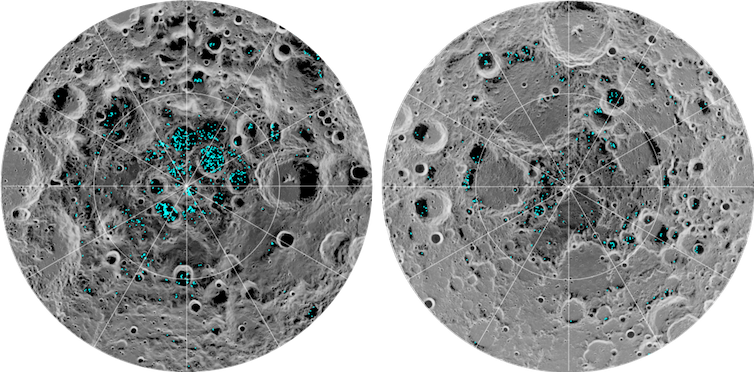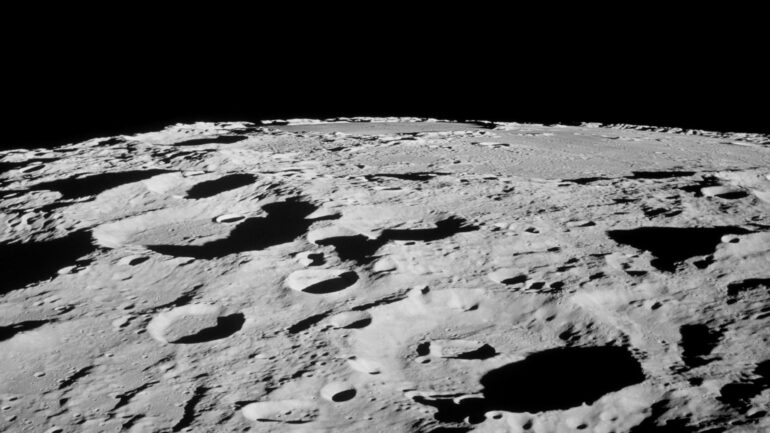NASA is planning to put U.S. astronauts back on the surface of the Moon by the end of 2024. This mission is just the beginning of what is shaping up to be a historic few decades in space exploration, as both the U.S. and China have plans to establish a permanent human presence on the Moon.
The first question you might have is: Why now?
The short answer is the relatively recent discovery of water on the Moon. But the deeper and perhaps more important questions have to do with how competing space agencies will pull off this feat given the limited resources on Earth’s satellite.
In this episode of The Conversation Weekly, we speak with two people – a planetary scientist who studies the geology of the Moon, and a space lawyer who studies space policy and geopolitics – about the challenges facing nations as humanity looks to set up shop on the Moon.
When Apollo astronauts brought back the first lunar rocks in the late 1960s and early 1970s, scientists were disappointed to find no sign of water or anything of much use in the samples. The Moon looked to be a barren place.
Fast forward a few decades and two coinciding events reshaped the future of the Moon – the sudden boom in the private space sector and the discovery of water frozen in permanently shadowed craters on the Moon’s surface. All of a sudden, setting up a base on the Moon was not only desirable, but feasible, too.

Research has found evidence of water, in the form of ice and shown in blue, frozen in craters around the Moon’s poles.
NASA
“If you want to explore space with humans, water becomes one of the most critical commodities,” explains Mahesh Anand, a professor of planetary science and exploration at the Open University in the U.K. “We need water to survive, but water can also be split into its individual components, like oxygen, which we need to breathe.” But there are many other resources on the Moon, and as Anand explains, “Water is where the story begins, but it doesn’t end there. Utilizing resources in situ – where you are – that’s what is actually opening up the field of lunar exploration.”
The U.S. Artemis program, which had its first launch in 2022, is the beginning of a plan to eventually build a base on the surface of the Moon as well as a space station in orbit around it. The U.S. and its collaborators are not alone in these lunar ambitions – China, too, has plans to establish a permanent presence on the Moon before 2030. And both groups explicitly plan to use lunar resources to accomplish these goals.
How this all works legally is an open question that is being debated right now in international venues like the United Nations, but there are some agreements on the books already.
“It’s fun to think about space as being the Wild West with no rules. But it’s not. We do have the Outer Space Treaty,” explains Michelle Hanlon, a law professor at the University of Mississippi in…
